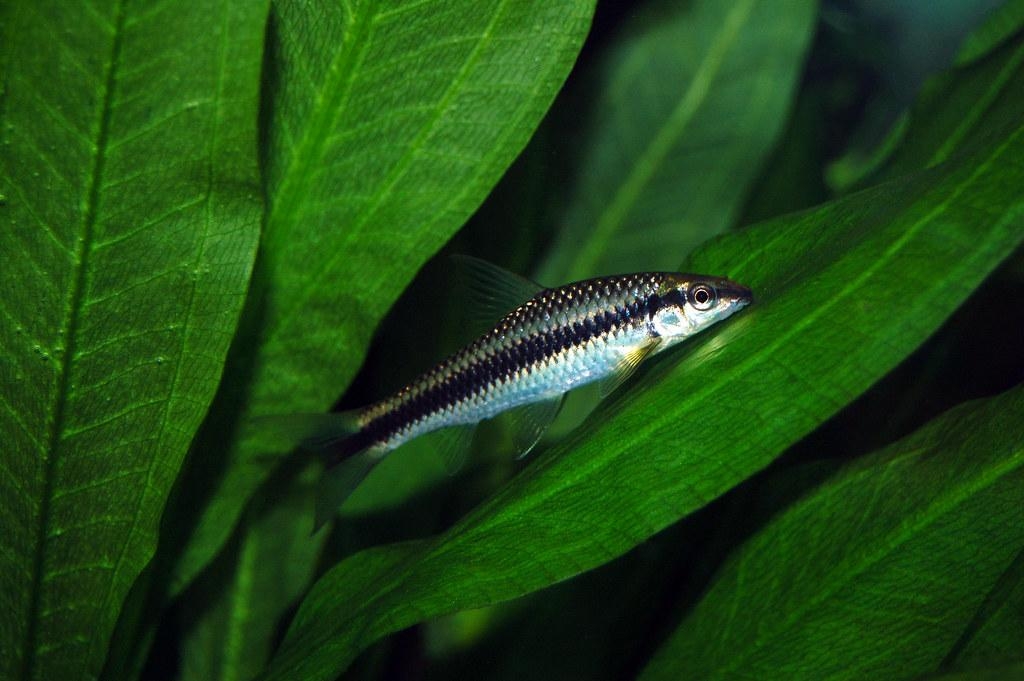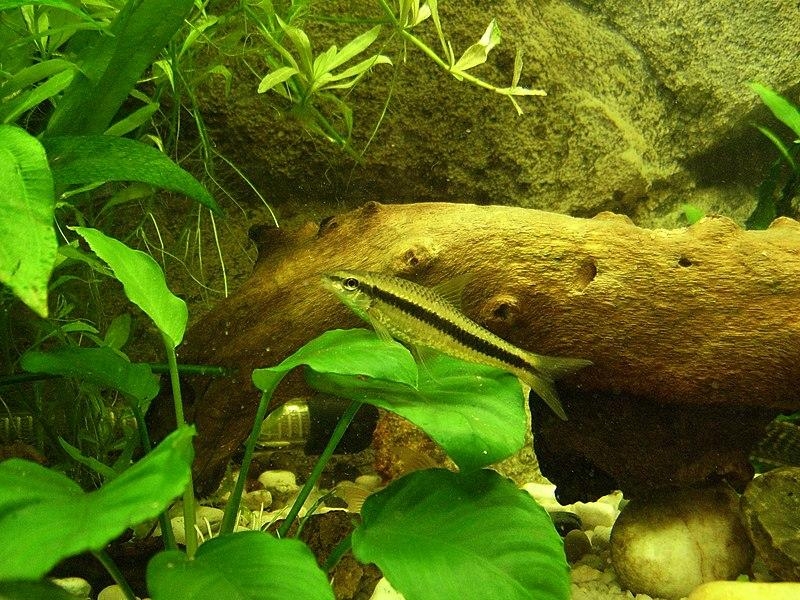Can you put a algae eater with a betta fish?
Are you thinking of adding an algae-eating fish to your Betta tank? Algae eaters can be a great addition to any aquarium, but many people wonder if it’s safe to keep them with Betta fish.
Betta fish are known for their brilliant colors and impressive fins. They are also referred to as “Siamese fighting fish” because of their territorial nature. On the other hand, algae-eating fish are popular for their ability to clean up tanks and keep algae growth under control.
While adding an algae eater to your Betta tank can seem like a good idea, it’s important to understand the potential risks and challenges of keeping these fish together. In this article, we’ll take a closer look at whether or not you can put an algae eater with a Betta fish and what you need to consider before making the decision to do so.

Can you put an algae eater with a betta fish?
The answer is: it depends. While it is possible to keep an algae eater with a Betta fish, there are several factors to consider before making this decision. The most important factor is the size of the tank and the type of algae eater you choose. Algae eaters come in many different sizes, and some can be too large for a smaller aquarium. It’s also important to note that some algae eaters can be aggressive and might not get along with a Betta fish.
In general, it’s best to avoid keeping an algae eater with a Betta if the tank is under 20 gallons. If your tank is larger than 20 gallons, then you may be able to safely add an algae eater such as Otocinclus or Nerite snails. These types of algae eaters are small and peaceful, which makes them more likely to get along with a Betta.
When adding an algae eater to your tank, it’s important to monitor the fish closely at first and look out for any signs of aggression. It’s also a good idea to provide plenty of hiding places for the Betta so that it can escape if needed. With proper care and monitoring, it is possible to keep an algae eater and a Betta fish together in the same tank.
Do bettas eat algae?
Bettas are a species of freshwater fish beloved and kept by aquarium hobbyists around the world. While they can live alongside some other aquatic animals, they’re generally seen as a great fish to keep alone or in pairs. When it comes to eating algae, though, the majority of Bettas won’t touch it—not unless you have a Siamese Algae Eater!
Algae appears when your tank is exposed to too much light or nitrates become too high. Not only are these environmental issues detrimental for the health of your Betta, but their diet shouldn’t contain algae anyways As carnivores, Bettas thrive on diets consisting mainly of protein-dense meals like Betta pellets and flakes, bloodworms, brine shrimp, insects, and daphinia. Supplementing their diet with these items will give them all the nutrition they need while also helping prevent the accumulation of excessive algae in their tank.
What is a good algae eater to live with a betta?
When it comes to keeping a clean and beautiful fish tank, having the right algae eater can make all the difference. Not only do algae eaters significantly help your fight against algae, but they also make your tank look great. But with so many different types of fishes available to choose from, it can be hard to decide which one is going to work best with your Betta.
Fortunately, there are some options that are especially suitable for aquariums with Betas. The best algae eaters for a tank with a Betta include Otocinclus catfish, cherry shrimp, Nerite snails, Siamese Algae Eaters, and Mystery Snails. All five of these species have been proven effective at controlling algal growth in aquariums. Furthermore, they are peaceful enough not to start fights with other creatures that may be living in your Betta’s habitat. They also offer plenty of benefits such as improving oxygen levels in the tank and adding an extra bit of color and activity that can delight their owners.
Amano shrimp
Amano Shrimp are one of the most beneficial additions you can make to any Betta tank. Not only do they have great algae-eating abilities, but they also live peacefully alongside Bettas with minimal impact to water standards. They are a bit larger than some other options, so it’s not possible for a Betta to eat them. Therefore, as long as there’s enough cover in the form of plants, decorations and a substrate that provides ample space for hiding, there will never be any conflict between these two inhabitant species.
Amano Shrimps largely consume algae and detritus from uneaten food, but they will also appreciate fish food on occasion. A well-maintained tank mixed with plenty of vegetation and places for the shrimp to hide should keep any potential conflicts between these two species at bay. In addition, Amano Shrimp provide an attractive focal point in your tank while keeping the algae in check. All in all, adding an Amano Shrimp is a great idea for any Betta tank set up!
Nerite snail
Nerite snails are one of the most popular tank mates for Betta fish, and there’s a good reason for that – they are excellent algae eaters and they never bother other peaceful fish. The snails can tolerate various water conditions, but to be exact, the water temperature should stay between 65 and 85°F, pH should be between 6.5 and 7.5, while the nitrite levels at no more than 20 ppm. Providing your nerite with plenty of plants and places to hide will make them feel safe in their environment and help keep them calm. Even though they’re naturally great scavengers, it is always recommended to offer nerites some food every 2-3 weeks if you notice that there is not enough algae or waste around the bottom of your tank.
Apart from being great tank companions for Bettas due to their inactive nature, you will also find that these snails don’t reproduce quickly or need any special care apart from what has already been mentioned here unless you see signs like excessive shell shedding or discoloration around their shells. This situation requires immediate attention as it might be the sign of an underlying problem that needs to be addressed right away.
Otocinclus catfish
The Otocinclus Catfish is an ideal freshwater fish for aquarists due to its low maintenance requirements and attractive appearance. This small species of catfish originates from South America, and prefers warm tropical waters, with a temperature range from 72 to 82 °F. They require a pH between 6-8.0, as well as 0ppm levels of nitrites and ammonia.
These bottom dwelling catfish enjoy camouflaging themselves among decoration and can be kept in shoals of six in a 30 gal tank if kept with a Betta. Herbivorous in nature, they feed mainly on algae found at the bottom of their habitat and are more than capable of keeping it clean for you. With its beautiful coloration and unique personality this catfish would make a wonderful addition to any tank setup; just be sure to maintain regular water changes and optimal parameters for them – they will soon become your favorite little additions!
Other ways to control algae in a betta tank?

Algae in your betta tank can be a frustrating problem. If you want to prevent it or reduce the amount of algae present without adding another fish, there are several tips you can try. One way to get rid of algae is to physically scrub them off when you clean out your tank. A soft toothbrush or specifically designed scrubber for tanks will do the job easily. It is also important to make sure you are cleaning out your tank at least every two weeks and replacing some of the water with conditioned tap water. Doing this regularly will help keep the levels of nitrates and phosphates low, which limits the amount of food available for algae growth.
It is also important to check your water parameters more frequently and correct any potential problems quickly. Make sure you only use aquarium-safe products such as dechlorinators, fish food, and additives that are specifically formulated for aquatic life environments. Additionally if there is direct sunlight peering into your tank through a window or skylight this should be limited, as too much light can contribute to an overgrowth of algae in the tank. Keeping these few precautions in mind can greatly reduce the amount of algae present in your betta tank and help keep your fish healthy and safe!